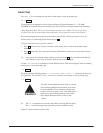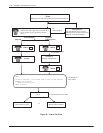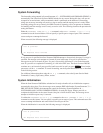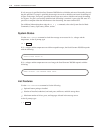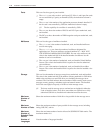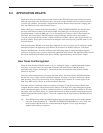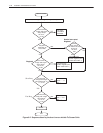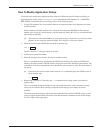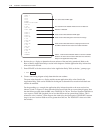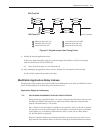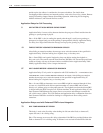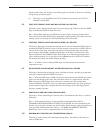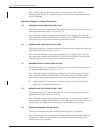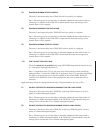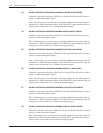
Maintenance
Commands 6-45
Octel Overture 200/300 Serenade 3.0
PB60014–01
How To Modify Application Delays
You
should only modify those application-delay indexes for PBX tones that fail. Before modifying an
application-delay index, use the
PRT (PRINT
TONE
) command and COS Attribute 70 — MEASURE
PBX T
ONES, to determine the correct timing value. Use the following steps:
1.
Assign COS Attribute 70 to a test mailbox that has an extension number for a telephone set located
near the terminal.
When a mailbox with COS Attribute 70 is called, the Octel Overture 200/300 dials the extension
number
, stays on line for 10 tone changes, and then hangs up. During this call, you can determine the
tone cadence of the PBX.
.
The extension called should
not
be set to forward on ring-no-answer
, busy
, or fast busy
. Other
features, such as camp-on, must be disabled. This could give a false tone cadence.
2.
Select an
Octel Overture 200/300 port and at the @ prompt, type
PRT x
Enter
For this command,
x
is the port number to be used.
3.
Call that port’
s extension number
.
4.
When the message server answers, dial the test mailbox number
.
The
PRT
command monitors and displays the DTMF tones dialed by the caller, the DTMF tones
dialed by the Octel Overture 200/300, and the call-progress tones from the PBX to the terminal. This
command is a real-time command and can be initiated on only one port at a time. The information is
not stored.
.
If the tones do not show on the screen when the
PRT
command displays the DTMF events, at
the @ prompt, type
C S
Enter
5.
Repeat steps 2 through 4. If executing the
C S
command does not help, contact your technical
support center
.
The
PRT
command should be initiated for any call condition that fails, such as when the message
server calls an extension that is sending a ringback but the message server detects an answer
condition.
The following example displays tone information when the Octel Overture 200/300 screens a call to
a ring-no-answer extension that fails. Refer to the Miscellaneous Commands section in this chapter
for a list of Print T
one output types.



